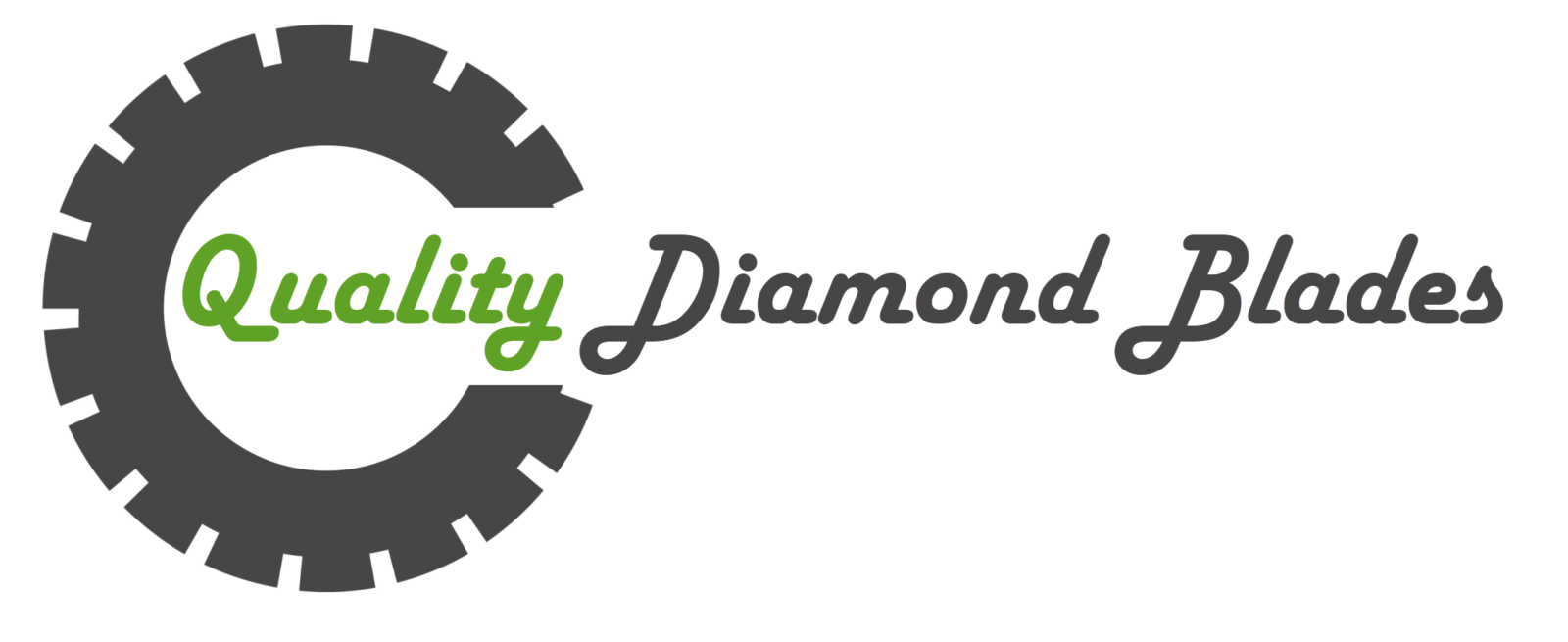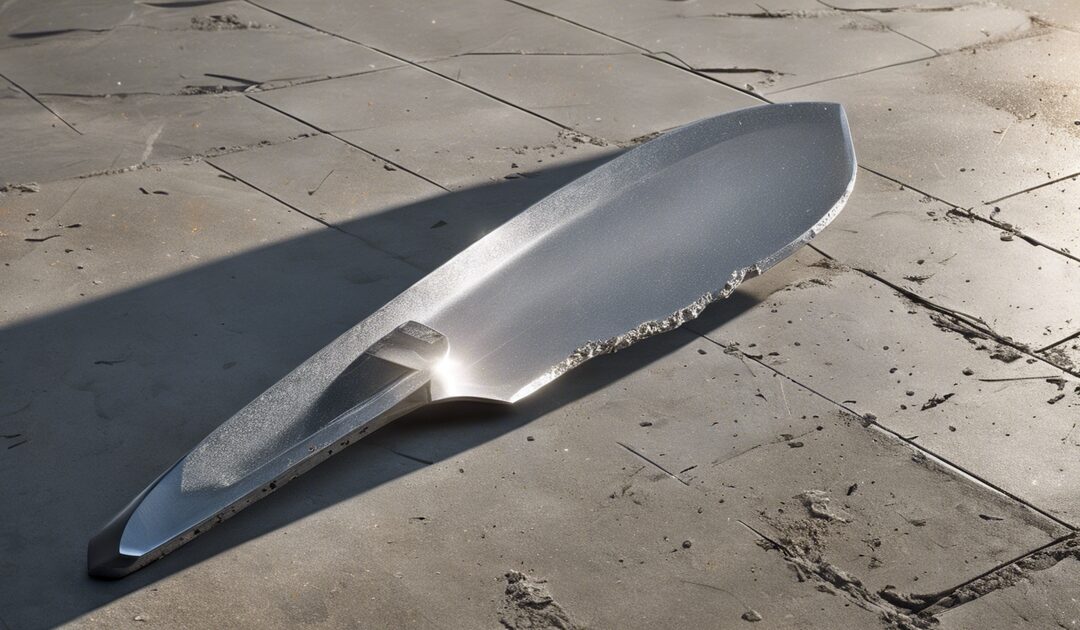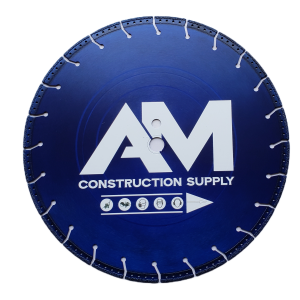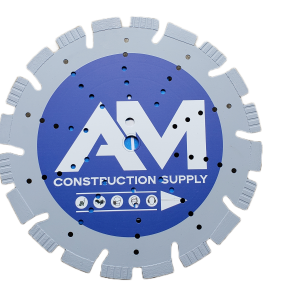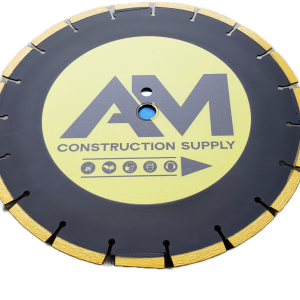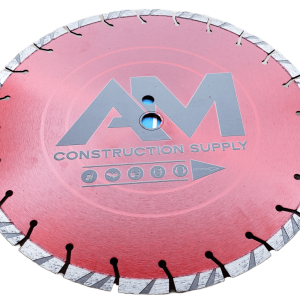Over 70% of construction projects require precise cutting tools, with concrete being one of the most common materials needing specialized blades. The quest for the best 18 inch diamond blade for concrete is more than just a shopping trip; it’s about securing a tool that ensures efficiency, precision, and safety in your work. Whether you’re slicing through thick slabs or detailed architectural elements, choosing the right diamond blade can significantly impact your project’s success. This guide dives into what makes a diamond blade stand out, focusing on durability, cutting speed, and compatibility with different types of concrete. Let’s cut through the noise and find the perfect match for your construction needs.
Key Takeaways
- To choose the best 18-inch diamond blade for concrete, start by understanding the unique features that distinguish quality blades, including their cutting ability, durability, and compatibility with different concrete types.
- Selecting the right blade involves considering the specific requirements of your concrete project, such as the depth and precision of the cut needed, as well as the type of concrete material you’ll be working with.
- Quality blades offer significant advantages for concrete projects, including faster cutting speeds, longer lifespan, and less downtime for blade changes, which can increase overall efficiency and reduce project costs.
- When comparing brands, look beyond price and focus on performance metrics, customer reviews, and the manufacturer’s reputation to ensure you’re getting the best value for your investment.
- Regular maintenance of your diamond blade can extend its life and maintain its cutting efficiency; follow the maintenance tips discussed to keep your blade in top condition.
- Use the purchasing guide provided as a roadmap to navigate the wide range of options available, ensuring you make an informed decision that meets both your project needs and budget constraints.
Understanding Diamond Blades
Composition
18-inch diamond blades are crafted using a mix of metal powders and industrial-grade diamonds. The metals provide the blade’s body, while the diamonds do the cutting. This combination is crucial for performance and durability.
The presence of industrial-grade diamonds makes these blades exceptionally capable of cutting through concrete. Their hardness allows for precise cuts, enhancing the blade’s overall effectiveness. The quality of the diamonds directly impacts the blade’s lifespan and efficiency.
Types
There are three main types of 18-inch diamond blades: segmented, turbo, and continuous rim.
- Segmented blades have gaps that keep the blade cool and improve debris removal. They’re ideal for cutting through thick concrete.
- Turbo blades feature a continuous rim with serrated edges, offering faster cuts with a smoother finish.
- Continuous rim blades provide the smoothest cut but at slower speeds. They’re best suited for delicate concrete cutting tasks.
The choice between these types depends on the desired cutting speed and finish quality. Each type has its specific application, making it vital to select the right one for your task.
Usage
To maximize an 18-inch diamond blade’s lifespan, proper usage is key. It involves maintaining the right speed and ensuring adequate water flow for cooling. These blades shine in scenarios demanding deep cuts in concrete or when precision is paramount.
Safety cannot be overstressed. Always wear protective gear and ensure your equipment is in good condition before starting. Following these guidelines not only extends your blade’s life but also ensures a safer work environment.
Benefits
Using an 18-inch diamond blade for concrete brings unmatched efficiency and precision to construction projects. These blades can handle various concrete densities, making them incredibly versatile tools.
Their durability translates into cost-effectiveness over time, as they can outlast other cutting options when used correctly. This makes them a valuable investment for contractors looking to maintain high-quality standards while keeping costs under control.
Selecting the Right Blade
Material Compatibility
Choosing a diamond blade that matches the material you’re cutting is crucial. The types of concrete and construction materials vary widely, including reinforced concrete, asphalt, brick, and block. Each material has its own hardness level, which directly affects your blade choice.
Harder materials require a blade with softer bonds to allow for easier erosion of the segment, exposing new diamonds. Conversely, softer materials need harder bonded blades to prevent premature wear. This balance ensures that your cuts are clean and precise while preventing damage to both the blade and the material.
Cutting Depth
An 18-inch diamond blade offers a significant cutting depth, usually up to 6-7 inches. This depth enhances your project’s scope by allowing you to tackle larger and more complex cuts with ease.
The ability to cut deeply impacts not just what projects you can take on but also how efficiently you can complete them. Depth control is paramount for safety and precision in cutting. It prevents overcutting that could jeopardize structural integrity or cause accidents.
Wet vs Dry Cutting
Both wet and dry cutting techniques have their places in construction work, each with benefits and limitations.
-
Wet cutting minimizes dust, providing a cleaner work environment and reducing the risk of respiratory issues. It also extends the lifespan of your diamond blade by keeping it cool during cuts.
-
Dry cutting, on the other hand, offers convenience and speed since it doesn’t require water setup or cleanup. However, it produces more dust and can lead to quicker overheating of the blade.
Wet cutting is preferable for indoor applications or when working with materials that produce hazardous dust. Dry cutting suits outdoor jobs where water access is limited or impractical. Understanding these differences helps optimize both safety measures and blade longevity.
Features of Quality Blades
Diamond Segments
The diamond segments attached to the rim play a crucial role in cutting through concrete. They determine not just the blade’s durability but also its cutting efficiency. The design of these segments directly impacts how well the blade can remove debris, ensuring a clean cut every time.
Different concrete types require segments with varied bonding materials. Softer bonds are used for harder concrete to ensure the diamond remains exposed for cutting. Conversely, harder bonds suit softer concrete, preventing premature wear. This customization ensures that whether you’re dealing with reinforced concrete or something less dense, there’s a segment bond tailored for optimal performance.
Core Design
At the heart of every 18-inch diamond blade is its core, essential for blade stability and effective heat dissipation. A well-designed core not only supports precision in cutting but also minimizes vibrations, making for smoother operations. This aspect is vital when aiming for precise cuts without compromising on speed or safety.
Innovations in core technology have led to tensioned cores that significantly reduce the risk of warping under intense heat and pressure. This advancement means your blade maintains its shape and effectiveness over longer periods, even under harsh conditions. It’s this robust construction that enables professionals to rely on their tools day in and day out.
Cutting Speed
Cutting speed is influenced by several factors including the hardness of the concrete and the type of diamond blade being used. Finding the right balance between speed and precision is key to maximizing project efficiency without sacrificing quality.
Adjusting cutting speeds based on the concrete’s hardness and blade specifications can greatly enhance both tool life and cut quality. For instance, harder concrete may require slower speeds to allow the diamonds to grind effectively without overheating, while softer materials can be cut faster without damaging the blade or material.
18-Inch Diamond Blade Overview
Specifications
When choosing an 18-inch diamond blade for concrete, certain technical specifications are crucial. The arbor size, segment height, and diamond concentration each play a pivotal role in the blade’s performance and suitability for specific applications.
Arbor size must match your saw to ensure a secure fit. It directly influences the blade’s stability during cuts. Segment height affects how deep the blade can cut and its overall lifespan. A higher segment offers more use before needing replacement. Diamond concentration impacts cutting efficiency; higher concentrations provide faster cuts but may wear down quicker on hard materials.
These specifications are interconnected, balancing them is key to achieving optimal performance in concrete cutting tasks.
Performance
Users should have realistic expectations about real-world performance metrics of these blades. The composition and design of an 18-inch diamond blade significantly affect its ability to cut through different types of concrete.
Blades with a high-quality diamond matrix excel in both speed and precision, offering smooth cuts with minimal chipping. However, their performance can vary based on concrete conditions such as hardness and aggregate type. For instance, softer bonds are designed for harder materials, ensuring the diamonds are exposed at the right rate for efficient cutting.
Performance differences also manifest in how these blades handle reinforced concrete versus non-reinforced varieties. Blades optimized for reinforced concrete will feature segments designed to cut through both the concrete and metal rebar without slowing down or wearing prematurely.
Durability
The longevity of an 18-inch diamond blade hinges on several factors including material quality, usage frequency, and maintenance practices. High-quality materials in the blade’s core and segments contribute significantly to its durability by resisting wear from intense cutting activities.
Regular maintenance practices like checking for segment wear or damage extend a blade’s useful life. Using the blade within its intended application range prevents premature dulling or damage. For example, using a soft bond blade meant for hard concrete on softer materials can lead to rapid wear.
Advantages for Concrete Projects
Efficiency Gains
Using an 18-inch diamond blade significantly enhances project efficiency. This size allows for cutting through thick concrete slabs in a single pass, reducing the number of cuts required. It saves time, leading to faster project completion.
The need for fewer blade changes is another efficiency boost. Larger blades wear down less quickly than smaller ones when used on similar projects. This reduction in downtime keeps the workflow smooth and uninterrupted.
Energy savings are notable as well. Optimized cutting speeds mean less power consumption per cut. The 18-inch blades are designed to cut efficiently at lower speeds, which conserves energy and reduces operational costs.
Precision Cuts
The design of an 18-inch diamond blade ensures precision with minimal chipping. These blades feature high-quality diamonds and specific bond matrices that allow for clean cuts through concrete. This precision is crucial not only for aesthetic purposes but also for maintaining structural integrity.
For achieving the most accurate cuts, proper technique is key. Ensuring the concrete is adequately supported and using a steady feed rate can make a significant difference in cut quality. Precision impacts both the look and longevity of the concrete structure.
Longevity
Under normal conditions, an 18-inch diamond blade can last significantly longer than its smaller counterparts. The average lifespan depends on several factors including material hardness, cutting speed, and water usage during cutting.
Factors that extend this lifespan include proper blade cooling and avoiding overheating by using water when necessary. Conversely, dry cutting hard materials or pushing the blade too hard can shorten its life.
Investing in a higher-quality 18-inch diamond blade offers a favorable cost-benefit analysis over time. Though initially more expensive, their extended lifespan and reduced need for replacements can lead to cost savings in the long run.
Why Choose Quality Diamond Blades
Superior Materials
Quality diamond blades stand out because they use premium-grade diamonds and high-quality metal powders. This combination ensures the blade can cut through concrete smoothly and efficiently. The diamonds, being the hardest material, provide the cutting power, while the metal powder holds the diamonds in place.
Manufacturers carefully select these materials to balance cutting performance with wear resistance. They test various compositions to find the optimal mix that offers durability and effectiveness. This meticulous selection process guarantees that each blade meets high standards of quality.
Innovative Technology
The latest advancements in diamond blade technology have significantly improved how these tools perform. Manufacturers now use techniques like laser welding and tensioning to enhance the blade’s strength and cutting precision. These innovations not only make cutting through concrete faster but also safer for the user.
e top-performing blades feature specific technologies, such as cooling vents and noise-reduction cores. These additions help manage heat build-up and reduce noise levels, making for a more comfortable user experience without compromising on efficiency.
Customer Satisfaction
Feedback from users of 18-inch diamond blades often highlights their satisfaction with the product’s performance on concrete projects. Many praise the blades for their long lifespan and ability to make clean cuts consistently. However, some criticisms point to issues like premature wear when used on very hard or abrasive materials.
Manufacturers take this feedback seriously, using it to guide further product development. They focus on improving durability and versatility based on user experiences. This commitment to listening and adapting has led to innovations that directly address customer needs.
Comparing Brands
Price Analysis
The cost of 18-inch diamond blades varies widely across brands and models. Some are priced as low as $100, while high-end options can exceed $400. This range reflects differences in materials, manufacturing processes, and technology used.
Key factors influencing price include the quality of the diamond segments, the blade’s durability, and any proprietary features that enhance performance. It’s crucial for buyers to consider not just the initial cost but also the long-term value. A more expensive blade may offer better longevity and fewer replacements over time, balancing out its higher upfront cost.
Performance Metrics
When evaluating 18-inch diamond blades, cutting speed and material waste stand out as key performance metrics. These factors can significantly impact project timelines and costs, especially in professional settings.
Blade performance varies depending on the hardness and abrasiveness of the concrete being cut. For instance, a blade designed for soft concrete may wear down quickly on harder materials, affecting both speed and efficiency. Consistent performance is vital for professionals who cannot afford delays or increased material costs due to inefficient cutting.
User Reviews
User reviews often highlight durability, efficiency, and satisfaction with their 18-inch diamond blades. Many emphasize how certain blades have outlasted others or made jobs faster and cleaner with minimal waste.
These firsthand accounts can be invaluable in guiding potential buyers towards products that have proven their worth in real-world conditions. Standout blades often receive praise for their balance of cost and quality, making them highly recommended by the user community.
Maintenance Tips
Cleaning Practices
Proper cleaning of your 18-inch diamond blade is crucial for its performance and longevity. Dirt, debris, and concrete dust can accumulate on the blade, reducing its cutting efficiency. To maintain optimal performance, clean the blade after each use.
Start by using a soft brush or air compressor to remove loose particles from the surface. For tougher grime, soak the blade in soapy water for about 15 minutes before scrubbing gently with a soft brush. Rinse it thoroughly with clean water and dry it completely to prevent rusting.
Avoid harsh chemicals that can damage the diamond segments. Instead, opt for mild detergents specifically recommended for cleaning diamond blades. Regular cleaning not only keeps your blade sharp but also extends its lifespan significantly.
Storage Solutions
Storing your 18-inch diamond blade correctly is vital to avoid damage and extend its useful life. Environmental factors like humidity and temperature fluctuations can adversely affect the blade’s condition, leading to corrosion and warping.
To protect your blade, store it in a dry, cool place away from direct sunlight and moisture. Using a protective cover or case is highly recommended to shield the blade from physical damage and dust accumulation. Blade cases designed with ventilation holes are ideal as they prevent moisture buildup while keeping the blade secure.
For long-term storage, applying a light coat of oil on the blade can help prevent rusting. Ensure that the storage area is free from corrosive materials that could degrade the metal components of your diamond blade.
Usage Guidelines
Correctly installing and using an 18-inch diamond blade ensures safety and maximizes cutting efficiency. Always follow the manufacturer’s guidelines during installation to avoid common mistakes such as mounting the blade backward or over-tightening.
- Check that the arrow on the blade aligns with the direction of rotation on your saw.
- Securely fasten the blade without over-tightening to allow for thermal expansion during use.
- Begin cutting at a moderate speed, gradually increasing pressure as needed to avoid overheating.
Wearing appropriate safety gear is imperative when operating saws with large blades like these. Ignoring manufacturer guidelines can lead to accidents or premature wear of your equipment.
Remember, different materials require specific speeds and techniques for optimal cutting results. For instance, concrete demands a different approach than asphalt or tile does. Adjusting your technique according to material type will enhance both safety and effectiveness.
Purchasing Guide
Identifying Needs
Before diving into the purchase of an 18-inch diamond blade for concrete, it’s crucial to assess your specific needs. The scope of your project and the types of materials you plan to cut play a significant role in choosing the right blade. For instance, cutting through reinforced concrete requires a different blade than what you’d use for softer, non-reinforced materials.
Selecting the appropriate blade ensures efficiency and longevity. Consider the depth and precision required for your tasks. Also, think about future projects. Opting for a versatile blade that can handle various materials might save you time and money down the line.
Where to Buy
Finding a high-quality 18-inch diamond blade involves knowing where to look. Reputable retailers and online platforms are your best bet. Stores like Home Depot, Lowe’s, and specialized construction equipment suppliers often stock these blades. Online giants such as Amazon and eBay also offer a wide selection, but ensure you’re buying from a credible seller.
Purchasing from authorized dealers is beneficial for warranty and support reasons. They can provide valuable advice on which blade suits your needs best. Always compare prices and check availability before making a decision. This step can help you find the best deal without compromising on quality.
Warranty and Support
Understanding the warranty coverage for your 18-inch diamond blade is essential. Most manufacturers offer warranties ranging from 6 months to 1 year, covering defects in materials and workmanship. However, wear from normal use typically isn’t covered.
Accessing customer support is straightforward with reputable brands. They often have dedicated lines or email addresses for inquiries and issues. Knowing how to reach out ensures you can quickly resolve any problems that arise.
It’s vital to comprehend warranty terms and conditions fully. This knowledge provides peace of mind, knowing exactly what’s covered should anything go wrong.
Summary
Selecting the best 18-inch diamond blade for your concrete projects is crucial for efficiency, precision, and safety. We’ve explored everything from understanding the basics of diamond blades, identifying quality features, to maintenance tips and a purchasing guide. Quality blades ensure clean cuts, longer lifespan, and cost-effectiveness over time. It’s clear that investing in a high-quality 18-inch diamond blade not only elevates the outcome of your concrete projects but also maximizes your return on investment by reducing replacement costs and downtime.
Now’s the time to take action. Use this knowledge to make an informed decision that aligns with your project needs and budget. Remember, the right blade can make all the difference in your work’s quality and efficiency. Don’t settle for less; choose a blade that offers the best performance for cutting concrete. Start enhancing your project outcomes today.
Frequently Asked Questions
What makes a diamond blade suitable for cutting concrete?
Diamond blades designed for concrete have specific bond hardness and diamond grit size, ensuring efficient and clean cuts through tough materials.
How do I select the right 18-inch diamond blade?
Consider the concrete’s hardness, the power of your cutting equipment, and the type of cut required. Opt for a blade that matches these criteria for optimal performance.
What are the key features of a quality 18-inch diamond blade?
Quality blades boast high diamond concentration, appropriate bond hardness, and are engineered for wear resistance and cutting speed.
Why should I invest in a high-quality diamond blade for concrete projects?
High-quality blades offer longer life, faster cutting speeds, and reduced downtime due to fewer blade changes, enhancing project efficiency.
How often should I maintain my 18-inch diamond blade?
Regular maintenance after every use is recommended. Check for wear patterns and ensure the blade is clean and free from debris to prolong its lifespan.
Can you compare different brands of 18-inch diamond blades?
While specific brand comparisons vary, look for reputable manufacturers that provide detailed specifications, user reviews, and performance guarantees.
Where can I buy a quality 18-inch diamond blade?
Purchase from specialized construction supply stores or reputable online retailers that offer product warranties and detailed descriptions to ensure authenticity and performance.
